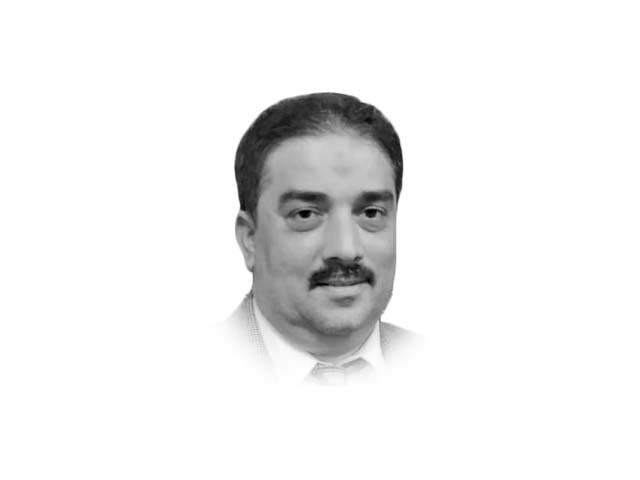Reorienting a new narrative
Pakistan is in need of recasting a narrative in realism

Nurturing a new national narrative of Pakistan is up for debate these days. National Security Adviser Dr Moeed Yusuf brought to the fore its salient credentials, at a national conference recently, by illustrating that it has to be proactive, unapologetic and pragmatic. Moeed simply underpinned the need for graduating the tools of communication, and at the same time reorienting the nation’s focus in research and development. His thrust on think tanks, academicians and people of repute to mobilise their synergies and intellect in order to paint a forehanded narrative is sine qua non to stand up and be counted.
Pakistan has struggled against odds at internal and external fronts. Much of the ado was in recollecting ‘what we are’ and ‘what we stand for’! Foreign-imposed and locally-engineered dogmas have taken a toll. Pakistan was always part and parcel of realpolitik as a frontline state. The state of Pakistan defeated communism, sidelined socialism, acted and reacted with Islamic extremism, and at the same time stood tall in making its presence felt as an indispensable member of the world community. Its narrative was state-centric in essence. This is where Pakistanis were able to overcome parochialism. And despite upheavals in evolving as a nation-state in diversity, they excelled through resilience.
Pakistan’s narrative at its inception was ingrained in religion. The Muslims of the subcontinent under the leadership of Muhammad Ali rallied around the Two-Nation theory. Yet, Jinnah had the acumen to lay down a more viable narrative of co-existence once the state of Pakistan came into being. This is why his August 11, 1947, speech to the Constituent Assembly will always remain the preamble of nationhood, and a narrative in unison.
It is current history that the Quaid’s advice was put on the backburner, and the nation was duped. Thus, the fall of East Pakistan within a span of 24 years was not the failure of its statehood narrative, but owing to a myopic political approach that was exercised by men at the helm of affairs. Since then the narrative kept on swinging like a pendulum — and sooner than later what remained of Pakistan entered into a security-centred syndrome. The new narrative rotated around two adversaries on its eastern and western frontiers in the form of antagonist India and Afghanistan, respectively.
This threat perception stalled nation-building, gave birth to non-state actors and more or less made Pakistan a reactionary-cum-defensive state. The world started looking at Pakistan from the prism of extremism, and foreign relations became military-centric. The country was looked at as a pawn to deliver in the Afghan context. While Islamabad did all it can to serve and appease major powers, it wasn’t obliged on the Kashmir count. This is where our narrative of playing to the gallery failed.
It goes without saying that Pakistan’s political elite were unable to develop an enduring consensus on the nature and direction of Pakistani state and society. They kept on experimenting sans homogeneity. It led to unending derivatives: from Jinnah’s Pakistan to Naya (new) Pakistan, and from Islamic Pakistan to Liberal Pakistan. Such self-centred narratives led to perceptional and geopolitical misnomers in the form of Sindhudesh, Jinnahpur, greater Punjab, trans-Durand Pakhtunkhwa and last but not least Balochistan looking towards the East.
But somehow they all missed out in carving a narrative of common man’s Pakistan. Either it was the Establishment or the two percent elite calling the shots. As a consequence, institutions weakened, history was distorted by eulogising invaders, and the nation was made to believe in mirage. In other words, a narrative based on status quo ruled the roost.
In the new era, and especially at a time when bipolarity is returning, Pakistan is in need of recasting a narrative in realism. Its biggest lacuna has been its inability to project its tangibles. Its strengths are enormous: an enterprising nation of 220 million, rich in diversity but unanimous in adversity. Pakistan must pull itself out of the vicious circle of reactionary antagonism to kick-start a renaissance of its own. The new narrative must draw its inspiration from indigenous history and a vision of togetherness. This is how the nation can depict a narrative in thorough nationalism.
Published in The Express Tribune, November 10th, 2021.
Like Opinion & Editorial on Facebook, follow @ETOpEd on Twitter to receive all updates on all our daily pieces.












1726134115-0/BeFunk_-(41)1726134115-0-208x130.webp)



COMMENTS
Comments are moderated and generally will be posted if they are on-topic and not abusive.
For more information, please see our Comments FAQ